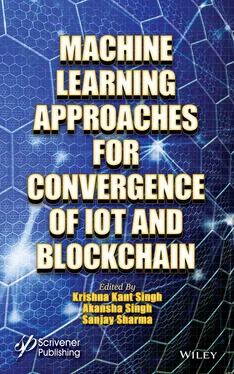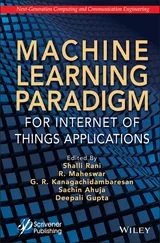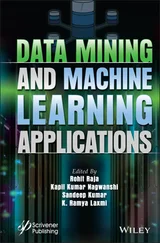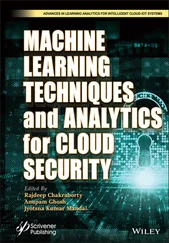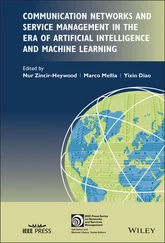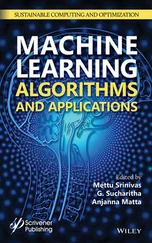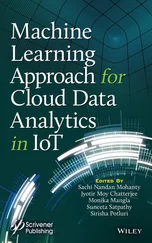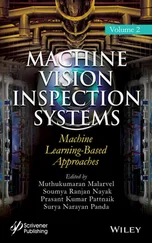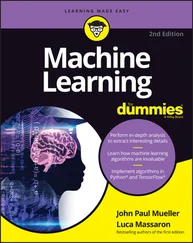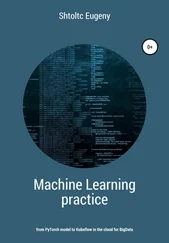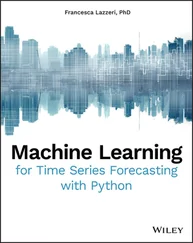1 Cover
2 Title page
3 Copyright
4 Preface
5 1 Blockchain and Internet of Things Across Industries 1.1 Introduction 1.2 Insight About Industry 1.3 What is Blockchain? 1.4 What is IoT? 1.5 Combining IoT and Blockchain 1.6 Observing Economic Growth and Technology’s Impact 1.7 Applications of IoT and Blockchain Beyond Industries 1.8 Conclusion References
6 2 Layered Safety Model for IoT Services Through Blockchain 2.1 Introduction 2.2 IoT Applications 2.3 IoT Model With Communication Parameters 2.4 Security and Privacy in IoT Services 2.5 Blockchain Usages in IoT 2.6 Blockchain Model With Cryptography 2.7 Solution to IoT Through Blockchain 2.8 Conclusion References
7 3 Internet of Things Security Using AI and Blockchain 3.1 Introduction 3.2 IoT and Its Application 3.3 Most Popular IoT and Their Uses 3.4 Use of IoT in Security 3.5 What is AI? 3.6 Applications of AI 3.7 AI and Security 3.8 Advantages of AI 3.9 Timeline of Blockchain 3.10 Types of Blockchain 3.11 Working of Blockchain 3.12 Advantages of Blockchain Technology 3.13 Using Blockchain Technology With IoT 3.14 IoT Security Using AI and Blockchain 3.15 AI Integrated IoT Home Monitoring System 3.16 Smart Homes With the Concept of Blockchain and AI 3.17 Smart Sensors 3.18 Authentication Using Blockchain 3.19 Banking Transactions Using Blockchain 3.20 Security Camera 3.21 Other Ways to Fight Cyber Attacks 3.22 Statistics on Cyber Attacks 3.23 Conclusion References
8 4 Amalgamation of IoT, ML, and Blockchain in the Healthcare Regime 4.1 Introduction 4.2 What is Internet of Things? 4.3 Machine Learning 4.4 Role of the Blockchain in the Healthcare Field 4.5 Conclusion References
9 5 Application of Machine Learning and IoT for Smart Cities 5.1 Functionality of Image Analytics 5.2 Issues Related to Security and Privacy in IoT 5.3 Machine Learning Algorithms and Blockchain Methodologies 5.4 Machine Learning Open Source Tools for Big Data 5.5 Approaches and Challenges of Machine Learning Algorithms in Big Data 5.6 Conclusion References
10 6 Machine Learning Applications for IoT Healthcare 6.1 Introduction 6.2 Machine Learning 6.3 IoT in Healthcare 6.4 Machine Learning and IoT 6.5 Conclusion References
11 7 Blockchain for Vehicular Ad Hoc Network and Intelligent Transportation System: A Comprehensive Study 7.1 Introduction 7.2 Related Work 7.3 Connected Vehicles and Intelligent Transportation System 7.4 An ITS-Oriented Blockchain Model 7.5 Need of Blockchain 7.6 Implementation of Blockchain Supported Intelligent Vehicles 7.7 Conclusion 7.8 Future Scope References
12 8 Applications of Image Processing in Teleradiology for the Medical Data Analysis and Transfer Based on IOT 8.1 Introduction 8.2 Pre-Processing 8.3 Improved FCM Based on Crow Search Optimization 8.4 Prediction-Based Lossless Compression Model 8.5 Results and Discussion 8.6 Conclusion Acknowledgment References
13 9 Innovative Ideas to Build Smart Cities with the Help of Machine and Deep Learning and IoT 9.1 Introduction 9.2 Related Work 9.3 What Makes Smart Cities Smart? 9.4 In Healthcare System 9.5 In Homes 9.6 In Aviation 9.7 In Solving Social Problems 9.8 Uses of AI-People 9.9 Difficulties and Profit 9.10 Innovations in Smart Cities 9.11 Beyond Humans Focus 9.12 Illustrative Arrangement 9.13 Smart Cities with No Differentiation 9.14 Smart City and AI 9.15 Further Associated Technologies 9.16 Challenges and Issues 9.17 Conclusion and Future Scope References
14 Index
15 End User License Agreement
1 Cover
2 Table of Contents
3 Title page
4 Copyright
5 Preface
6 Begin Reading
7 Index
8 End User License Agreement
1 Chapter 1 Figure 1.1 Industries in focus. Figure 1.2 Illustration of blockchain technology. Figure 1.3 Illustration of IoT. Figure 1.4 IoT and blockchain across industries. Figure 1.5 IoT and Blockchain in agriculture industry. Figure 1.6 IoT and blockchain in manufacturing industry. Figure 1.7 IoT and blockchain in food processing industry. Figure 1.8 IoT and blockchain in healthcare industry. Figure 1.9 IoT and blockchain in military. Figure 1.10 India’s economic growth from 2005 to 2018. Figure 1.11 Internet users. Figure 1.12 Smart homes technology. Figure 1.13 Specialized surveillance using IoT and blockchain. Figure 1.14 Smart street lighting enabled with IoT and blockchain.
2 Chapter 2 Figure 2.1 Interconnection of IoT services. Figure 2.2 Architecture of IoT services. Figure 2.3 Application areas of IoT services.Figure 2.4 IoT reference model (Source Minolli [65]).Figure 2.5 Layered architecture of blockchain with cryptography.Figure 2.6 Security solution to IoT through cryptography (Source [16] Yang).Figure 2.7 Blockchain in smart cities [Reference by Minoli 1-2 (2018)].
3 Chapter 3Figure 3.1 IoT and its applications.Figure 3.2 IoT and its components.Figure 3.3 Industrial IoT security statistics 2017.Figure 3.4 Development of blockchain over the years.Figure 3.5 Types of blockchain.Figure 3.6 Structure of blockchain.Figure 3.7 Applications of blockchain.Figure 3.8 AI integrated IoT home monitoring system.Figure 3.9 Smart home.Figure 3.10 Blockchain authentication.Figure 3.11 Smart traffic security.Figure 3.12 Number of cyber attacks.Figure 3.13 Cyber attacks across various countries.Figure 3.14 Number of data breaches.
4 Chapter 4Figure 4.1 Application of the IoT.Figure 4.2 Contribution of IoT in different sectors.Figure 4.3 Market forecast of IoMT.Figure 4.4 A deep neural networks with three hidden layers [19].Figure 4.5 Architecture of multilayer perceptron neural network [23].Figure 4.6 Applications of deep learning in the healthcare sector.Figure 4.7 Pillars of Blockchain technology [25].
5 Chapter 5Figure 5.1 Process of literature review.Figure 5.2 Research domains.Figure 5.3 Implementation of ML in smart buildings.Figure 5.4 Intelligence levels for smart cities [8].
6 Chapter 6Figure 6.1 ML development phases for healthcare.Figure 6.2 Sources of data for healthcare.Figure 6.3 Commonly used medical imaging modalities.Figure 6.4 IoT architecture for healthcare.
7 Chapter 7Figure 7.1 System design of blockchain.Figure 7.2 Architecture of intelligent vehicle [55].Figure 7.3 Blockchain technology.Figure 7.4 An ITS-oriented blockchain model [59].Figure 7.5 Expected potential attack surface [55].Figure 7.6 Issues emerging in the application of blockchain technology with tran...Figure 7.7 Basic mechanism of blockchain [94].
8 Chapter 8Figure 8.1 Flowchart of FCM clustering.Figure 8.2 Flowchart of crow search optimization algorithm.Figure 8.3 Flowchart of prediction-based lossless compression model.Figure 8.4 Image compression based on least square based prediction.Figure 8.5 Segmentation results corresponding to images from the brain web datab...Figure 8.6 Segmentation results correspond to real-time abdomen CT images. (a) I...Figure 8.7 Segmentation results correspond to real-time MR brain images. (a) Inp...Figure 8.8 Performance plot of partition coefficient and entropy.Figure 8.9 Performance plot of Xie and Beni Index.Figure 8.10 Performance plot of Fukuyama and Sugeno Index.Figure 8.11 Compression results corresponding to real-time abdomen CT images. (a...Figure 8.12 Compression results corresponding to real-time brain MR images. (a) ...Figure 8.13 Performance plot of compression ratio.Figure 8.14 Performance plot of FSSIM.Figure 8.15 Performance plot of PSNR.Figure 8.16 Performance plot of SC.Figure 8.17 Performance plot of NK.Figure 8.18 Performance plot of LMSE.Figure 8.19 Performance plot of NAE.Figure 8.20 Performance plot of compression quality.Figure 8.21 Hardware implementation of the image processing algorithms. (a) Fron...Figure 8.22 GUI interface for the loading of the DICOM image.Figure 8.23 Options available in the GUI interface.Figure 8.24 CROW-FCM segmentation result.Figure 8.25 Stages of GUI for feeding the compressed images into the cloud. (a) ...
Читать дальше
